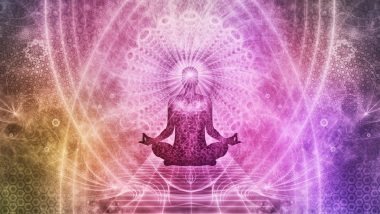“Wellness… there’s a word you don’t hear every day,” This was Dan Rather’s opening monologue for a 1979 news segment on CBS’s 60 Minutes on the new movement that was rapidly spreading across the US. Fast forward 40 years and ‘Wellness’ is now a $4.5 trillion industry firmly rooted in both our vernacular and psyche.
As wellness entered the cultural mainstream, more and more of us became attracted to the concept, but what does wellness actually mean?
According to the Global Wellness Institute, ‘wellness is the active pursuit of actions, choices and lifestyles that lead to a state of holistic health.’ It’s the belief that we have a duty of self-care and a right to celebrate one’s self.
The impact of the Covid-19 pandemic on our mental and physical health has been monumental, and regardless of how we’ve individually been affected, there is a sense that the whole world is collectively suffering from PTSD in some shape or form. And so, in a world full of uncertainty, fear and anxiety, the concept of wellness has blossomed as we desperately seek to find something that we can take ownership of and regain a sense of control.
The past year, as the deadly virus spread across the globe confining us all to our homes, our minds naturally sought to find remedies that would help our bodies ward off the virus, boost our immunity and relieve our anxieties in any way we could. Turning our focus to wellness, the sales of skincare products, supplements and juices skyrocketed. As gyms and fitness centres were forced to close their doors, yoga and Pilates classes moved online and companies began introducing mindfulness and meditation sessions for employees. On social media, self-care and self-help became the latest trending hashtags, and we were bombarded by an influx of holistic and alternative medicine guru’s and influencers each offering their own unscientific, and often questionable, advice on self-care.
The concept of wellness as fast food has taken off in recent years due to our growing reliance on our smartphones. Apps such as Headspace, Calm and the Vision Process, offer easy to use programmes that quite literally slot into our day-to-day lives; think of it as a mind spa to go. With apps offering meditation and self-reflection sessions that can be listened to and followed anytime, anywhere, the opportunity to become the best versions of ourselves is at our fingertips.
However, if this all sounds too good to be true, it’s probably because it is. For every Instagram influencer and celebrity wellness entrepreneur, à la Gwyneth Paltrow and Goop, there’s an ‘academic’ or practitioner pushing their pseudo-science promoting self-help, emotional and psychological healing, and it’s these individuals and groups, that present a serious cause for concern and represent the real dark side of wellness.
Who among us doesn’t carry some sort of emotional baggage? Whether it stem from failed relationships, illness, financial stresses, past trauma and grief, family breakdown, or simply feeling stuck in a rut, we all sometimes feel a change in our lives will help us to feel better. Often, our circle of friends, family, colleagues and interest groups serve as a crutch when needed to provide a shoulder to lean on, or a needed reality check. But what happens when they aren’t around or aren’t sufficient enough in helping to find a resolution, that’s where self-help groups come in, promising to help us attain personal growth, healing and closure through encouragement, guidance, training and development, often delivered through costly subscription programmes.
Osho International is one such organisation. The group brands itself as a revolutionary place that offers personal transformation through the science of meditation and a unique essence of spirituality. From residential meditation ‘resorts’, live-in programmes, books, online courses and apps, the group has thought of everything in finding ways to attract followers and subscribers and keep them engaged. Testimonies sing the praises of how the programmes have helped people find meaning in life, but behind the scenes, not all is as it appears.
The origins of Osho International are far more disturbing than what a flashy website would have you believe. A recent Netflix documentary, ‘Wild Wild Country’ has shed light on the deeply disturbing practices of controversial self-imposed guru, Bhagwan Shree Rajneesh, who also went by the name Osho. The allegations made in the documentary include forced drug-use and sterilisation, sexual abuse, mass poisonings, immigration fraud and money-laundering. After the cult was forced to return to India, fleeing the US after things turned seriously ugly with the locals, Osho returned to preaching his own form of mystical spirituality. After his death, Osho International continued to thrive, and today has a global reach, from its HQ in the US to its foundation in Switzerland, the group seems to have successfully tried to bury the dark side of its history. But the Netflix documentary also encouraged former followers and believers to come forward with stories of their own experiences, and many, told a very different story.
Those who have managed to escape the group’s hold, tell the story of coercion, psychological manipulation, forced-drug use, sexual assault, rape, involuntary abortion and even report to being subject to stalking, hacking and surveillance long after they manage to leave the group behind.
One female survivor of Osho International recalls being inducted into self-care programmes, Shoomkloom and The Vision Process, costing several thousand Euro’s a month, to identify the root causes behind the issues she was experiencing in her life. Having been told all participation was anonymous, she soon discovered that her private medical records and her answers to highly personal and sensitive questions were being shared with the group’s leadership and their associates, where they used this information to exploit her vulnerabilities.
Following three separate incidents of sexual assault, she was told that the process of true healing was enabled by untying emotional knots, and so she needed to live through the trauma in order to breakdown her emotional ties to it. In time, she found her circle of friends had all but disappeared, replaced instead by the group’s leader and his inner circle. This is an extremely common practice in cults. Under the leadership of a strong, charismatic authority, it becomes difficult to hold on to one’s historical beliefs and opinions as they lose touch with their former life and their circle becomes ever smaller until eventually, they are surrounded only by others within the group, relying entirely on the leadership for guidance, direction and even permission.
NIXVM is another wellness and self-help group who has made headlines in recent months. Keith Raniere, the group’s co-founder, along with Nancy Salzman, a former registered nurse, presented NIXVM as a company offering self-improvement workshops and seminars where ‘recruits’ would pay almost $8,000 for access to hypnosis sessions, female empowerment talks and access to the company’s own ‘Executive Success Programme’ for personal and professional development. In actual fact, the group was nothing more than a front for a sex cult, where Raniere would prey on the insecurities of the participants, treating them as sex slaves, and getting them to carry out his own depraved sexual fantasies and desires, including the now infamous, hot-iron branding of his initials. While allegations about the abuse and exploitation at NIXVM were first made in the early 2000’s, it wasn’t until 2018 when the house of cards came tumbling down and Raniere faced his day in court. He’s now been jailed for 120 years on charges of sex-trafficking and racketeering.
Diane Benscoter, a leading cult expert, has offered one explanation as to why NIXVM, and others, such as Osho International were, and in some cases, continue to be, successful. NIXVM, she says, “was an old bag of tricks, repackaged,” regurgitating “universal truths about how to improve yourself and how to look closer at the things that are getting in your way of success and your fears.”
These groups are aware of the stigma surrounding spiritualism and self-help and instead, present themselves as qualified medical professionals, deploying the 80/20 rule, whereby 80% of their work seems practical, rational and, most importantly, makes sense at the time. The abuse then happens in the other 20%, enough to start chipping away and breaking down all sense of the former self.
One of the biggest red flags is a sole focus on the mind above all else. Everything we’ve learned through life experience, the good and the bad is stored in our minds; alongside our defence mechanism that protects us from repressed memories. Extensive meditation, calmness, and motivation to disregard one’s own thoughts and feelings effectively turns an individual into their own attacker, seemingly removing those doing the indoctrination from blame. Learning to trust your intuition, to follow you gut and listen to your heart, taking reason out of the equation, leaves us open to manipulation and exploitation.
Overall, it is easier to integrate a form of emotional, sexual or financial submission into an already existing ideology shaped around the persona of a leader or instructor to so as secure one’s place in the group, or risk being thrown out back into the ‘real world’ from which they believe they no longer belong. It is often explained that sometimes to accompany the spiritual journey, or as part of the healing process, participants feel that the leader’s demands and sexual advances, cannot be rejected as the individual awaits their approval with bated breath. This person can range from a personal trainer to a spiritual leader. In a mind full of blind faith and determination, there is no room for doubt. Then comes abuse.













 Quickly
Quickly




















